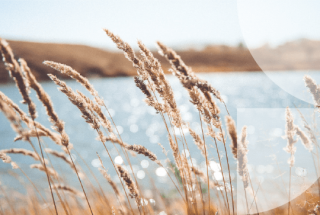National Environmental Standards for Freshwater

National Environmental Standards for Freshwater
Thursday 13 August, 2020
The Resource Management (National Environmental Standards for Freshwater) Regulations 2020 (“the Regulations” or “NESF”) were released on 5 July 2020. The Regulations prescribe national environmental standards in relation to freshwater and set requirements for carrying out certain activities which pose a risk to freshwater and freshwater ecosystems.
The Regulations are part of the Governments wider Freshwater scheme which were released concurrently and include an updated National Policy Statement on Freshwater Management 2020, stock exclusion regulations and updated regulations for measuring and reporting water takes. This article provides a short summary of the provisions in the NESF. We intend to provide further articles on the other freshwater policies in the next Legal Brief.
Standards for Farming Activities
The Regulations provide temporary standards for farming activities and outlines those activities which are permitted, including for:
- Feedlots and other stockholding areas;
- Agricultural intensification, including land use conversions, irrigation, and dairy support land;
- Intensive winter grazing; and
- Applications of synthetic nitrogen fertiliser to pastoral land.
Where the permitted thresholds cannot be met, the Regulations provide standards for discretionary activities, and in some cases non-complying activities.
Standards for other activities that relate to freshwater
Natural Wetlands
The Regulations prescribe standards for natural wetlands. Activity statuses are provided for vegetation clearance, earthworks or land disturbance, and the taking, use, damming, diversion, or discharge of water in relation to:
- Restoration of wetlands;
- Scientific research;
- Construction and maintenance of wetland utility structures;
- Construction, maintenance ad operation of specified infrastructure and other infrastructure;
- Sphagnum moss harvesting;
- Arable and horticultural land use,
- Natural hazard works;
- Drainage of natural wetlands; and
- Other activities without a status.
Reclamation of Rivers
The Reclamation of the bed of any river is provided for as a discretionary activity.
Passage of fish affected by structures
The Regulations prescribe standards for activities that relate to the passage of fish, particularly the placement, use, alteration, extension or reconstruction of certain structures in, on, over, or under the bed of any river, including culverts, weirs, flap gates, dams and fords. They do not apply to structures which were existing at the close of 2 September 2020 including later alterations or extensions and to customary weirs.
The standards include information requirements which ensure the relevant regional council obtains information on the design and performance of structures in relation to the passage of fish. Activity statuses are also provided, in relation to the activities for culverts, weirs, and passive flap gates that are in, on, over, or under the bed of a river.
Administrative provisions
Local authorities have the ability to charge for monitoring activities which are permitted under the regulations, where they are responsible for monitoring those activities.
District rules, regional rules or resource consents may be more stringent than the Regulations and would therefore override the provisions in the Regulations. This is particularly important in the Waikato with the recent notification of the decision version of Plan Change 1: Waikato and Waipa River Catchments to the Waikato Regional Plan. An example of a more stringent rule in Plan Change 1 is the non-complying activity rule (Rule 3.11.4.9) for land use conversion where the change exceeds a cumulative net total of 4.1 hectares from that which was occurring at 22 October 2016.
The Regulations come into force on 3 September 2020, although some provisions have a delayed commencement date including:
- subpart 3 of Part 2 (intensive winter grazing) which comes into force on 1 May 2021;
- regulations 12 to 14 (stockholding areas other than feedlots) and subpart 4 of Part 2 (application of synthetic nitrogen fertiliser to pastoral land) which come into force on 1 July 2021.






